Veloute Sauce + Liaison = Allemande
Allemande sauce is a classic French sauce made from a velouté sauce, a basic white sauce made from a roux of butter and flour, and a liaison of egg yolks and heavy cream. The sauce is then flavored with lemon juice, salt, and white pepper.
The name “allemande” means “German” in French, and it is believed that the sauce originated in Germany before it was adopted by French cuisine. There are several theories as to why the sauce is called “allemande,” including the fact that it was served with dishes that were popular in Germany at the time, such as veal, or that it was named after a German chef who introduced the sauce to France.
To make allemande sauce, you will need to start by making a velouté sauce. To do this, you will need to melt butter in a saucepan over medium heat. Once the butter has melted, add flour and cook, constantly stirring, until the mixture turns a light golden brown. This will create the roux, which will act as the base for the sauce.
Next, gradually add chicken or veal stock to the roux, constantly whisking to prevent lumps from forming. Bring the mixture to a boil, then reduce the heat and let it simmer until the sauce has thickened.
Allemande Sauce Recipe
Equipment
- medium saucepan
- small saucepan
- sieve or chinois
- bowl for the finished sauce
- whisk
- wooden spoon
Ingredients
- 1¾ oz butter
- 1¾ oz flour
- 2 pints chicken stock or veal stock
- 4 egg yolks
- salt & pepper to taste
- 1 tablespoon lemon juice
- 1 dash ground nutmeg
Instructions
- Heat the stock in a small saucepan. Then in the other saucepan, melt the butter and add the flour. Stir with a wooden spoon over low heat for 2-3 minutes to create a blond roux.
- Make the sauce - Gradually add the hot stock into the pan with the flour and melted butter and constantly stir to blend the ingredients. Bring to a boil, stirring all the time.If you stop stirring or leave the sauce on the heat unattended, it will stick and burn.
- Lower the heat and simmer until the sauce reaches the desired thickness, about 10-15 minutes.
- Season the sauce with salt and a couple of turns of pepper, and allow it to cool for a couple of minutes.
- Finally, beat the egg yolks into the sauce one at a time until well incorporated.
- Strain the sauce through the sieve into a bowl or another pan.
- Season with salt and pepper, lemon juice, and nutmeg.
- Serve.
Make a Liaison
Once the velouté sauce is ready, you must make the liaison. A liaison is a mixture of egg yolks and heavy cream used to thicken and enrich sauces, soups, and other dishes.
The egg yolks provide a velvety texture and a rich, creamy flavor, while the heavy cream adds richness and a smooth, velvety consistency.
A liaison is typically made by whisking together egg yolks and heavy cream in a small bowl. The mixture is then gradually added to the dish being prepared while stirring constantly to prevent the eggs from scrambling.
Once the liaison has been incorporated into the dish, it should be heated gently until it has thickened, but not brought to a boil, as boiling can cause the eggs to curdle.
Liaisons are used in various dishes, including sauces, soups, and desserts. Some examples of dishes that may use a liaison include velouté sauce, allemande sauce, crème anglaise, and hollandaise sauce.
In addition to adding flavor and texture to dishes, liaisons can help stabilize emulsions, such as mayonnaise and vinaigrette, and give them a smooth, creamy consistency. They can also enrich custards and other desserts, giving them a velvety texture and a rich, creamy flavor.
Add the Liaison to the Velouté Sauce
Gradually add the liaison to the velouté sauce, constantly stirring to prevent the eggs from scrambling. Bring the mixture to a boil, then reduce the heat and let it simmer for a few minutes until it has thickened.
Finally, season the allemande sauce with lemon juice, salt, and white pepper to taste. You can also add other ingredients, such as chopped parsley or tarragon, to give the additional sauce flavor.
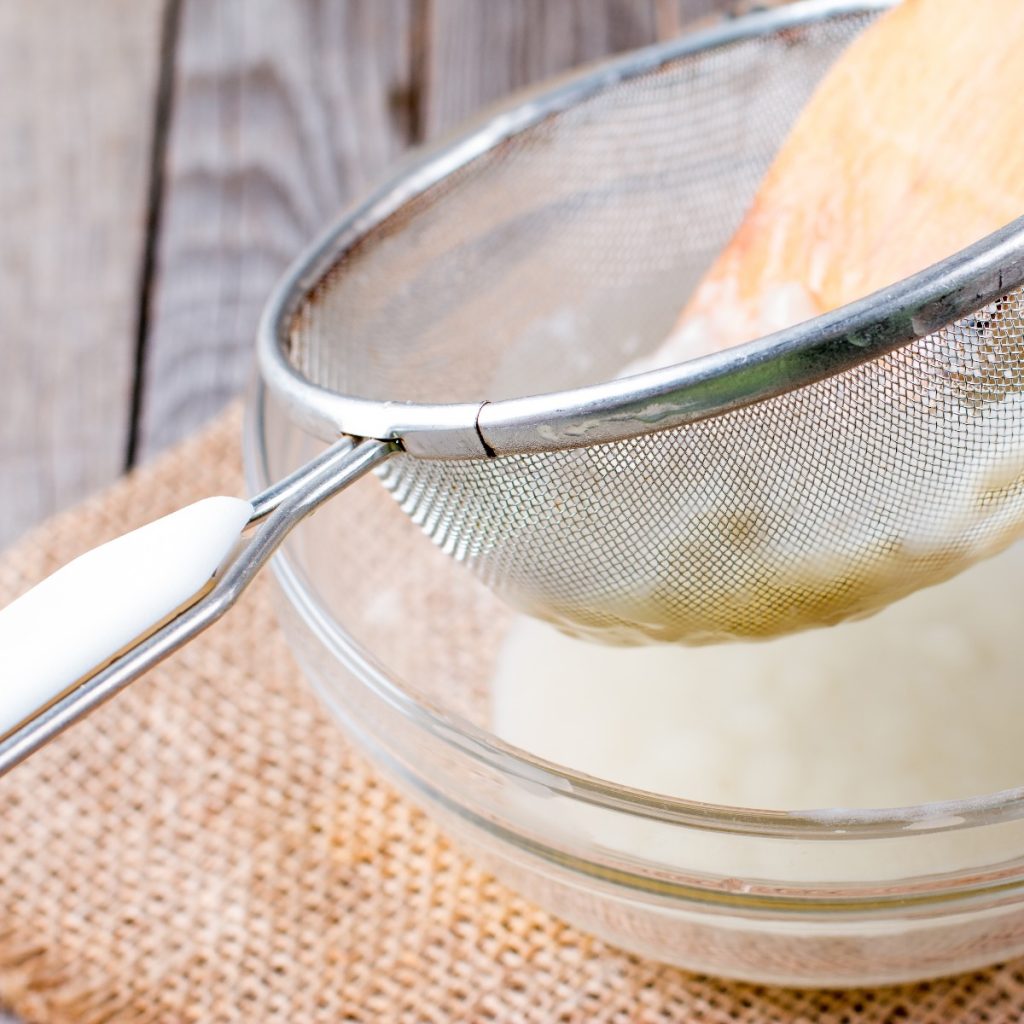
Where to Use Allemande Sauce
Dish | Description | Why Allemande Sauce Works | Wine Pairing |
| Poached Chicken | Tender chicken breast poached in broth for a light, moist result. | The velvety, lemony tang of Allemande enhances the subtle flavor of chicken. | Chardonnay(lightly oaked) |
| Veal Blanquette | A classic French stew of veal simmered in white stock, served with vegetables. | Allemande sauce is traditionally used here, enriching the mild veal. | White Burgundyor Viognier |
| Steamed White Fish (e.g. cod or sole) | Mild, flaky fish gently cooked and served simply. | The delicate sauce adds creaminess without overpowering the fish. | Muscadet or Sancerre |
| Asparagus Spears | Lightly blanched asparagus spears served warm. | Allemande adds richness and a touch of acidity to balance the vegetal notes. | Sauvignon Blanc |
| Hard-Boiled Eggs (Oeufs à l’Allemande) | Halved eggs served warm and sauced. | The sauce coats the eggs beautifully, adding elegance and flavor. | Chenin Blanc or Crémant |
| Sweetbreads | Lightly sautéed or poached veal or lamb sweetbreads. | Allemande complements the rich texture and mild flavor of offal. | Pinot Gris or Gewürztraminer |
| Stuffed Cabbage Rolls | Cabbage leaves filled with veal, chicken, or rice mixture. | Allemande sauce brings cohesion and creamy acidity to the dish. | Grüner Veltliner |
| Gnocchi or Spaetzle | Soft dumplings or noodles often served with a sauce. | Allemande coats these starches well and adds a refined touch. | Alsatian Riesling |
| Braised Leeks or Celery | Braised until tender, then sauced. | Allemande enriches these humble vegetables with elegance. | White Bordeaux |
Other Names for Allemande
There are several other names for allemande sauce, including:
Alternate Name | Description |
| Sauce Blanche | A generic term for white sauce, often used to describe velouté before it is enriched; may refer to the base used in Allemande. |
| Sauce Blonde | Refers to the pale golden color achieved when velouté is thickened and finished with egg yolks and cream — essentially Allemande. |
| Sauce au Jaune d’Œuf | “Egg yolk sauce” in French; emphasizes the role of yolks in enriching the sauce. |
| Sauce à la Crème | “Cream sauce”; a general term, but when paired with velouté and yolks, it points to Allemande. |
| Velouté aux Jaunes d’Œufs | Velouté thickened with egg yolks, defining the structure of Allemande sauce. |
| Sauce Jaune | “Yellow sauce,” referencing the rich, golden color imparted by egg yolks. |
| Egg-Yolk Velouté | An English descriptive term for Allemande; specifies the thickening method. |
| Egg-Yolk Sauce | Simplified English term emphasizing yolks as the main enriching agent. |
| Cream Sauce | Often a catch-all term; when made from a velouté base with yolks and cream, it qualifies as Allemande. |
IMPORTANT – This sauce does not hold up very well and should be used as soon as it is made. If not handled properly, the sauce will separate, and you’ll have to start all over again.

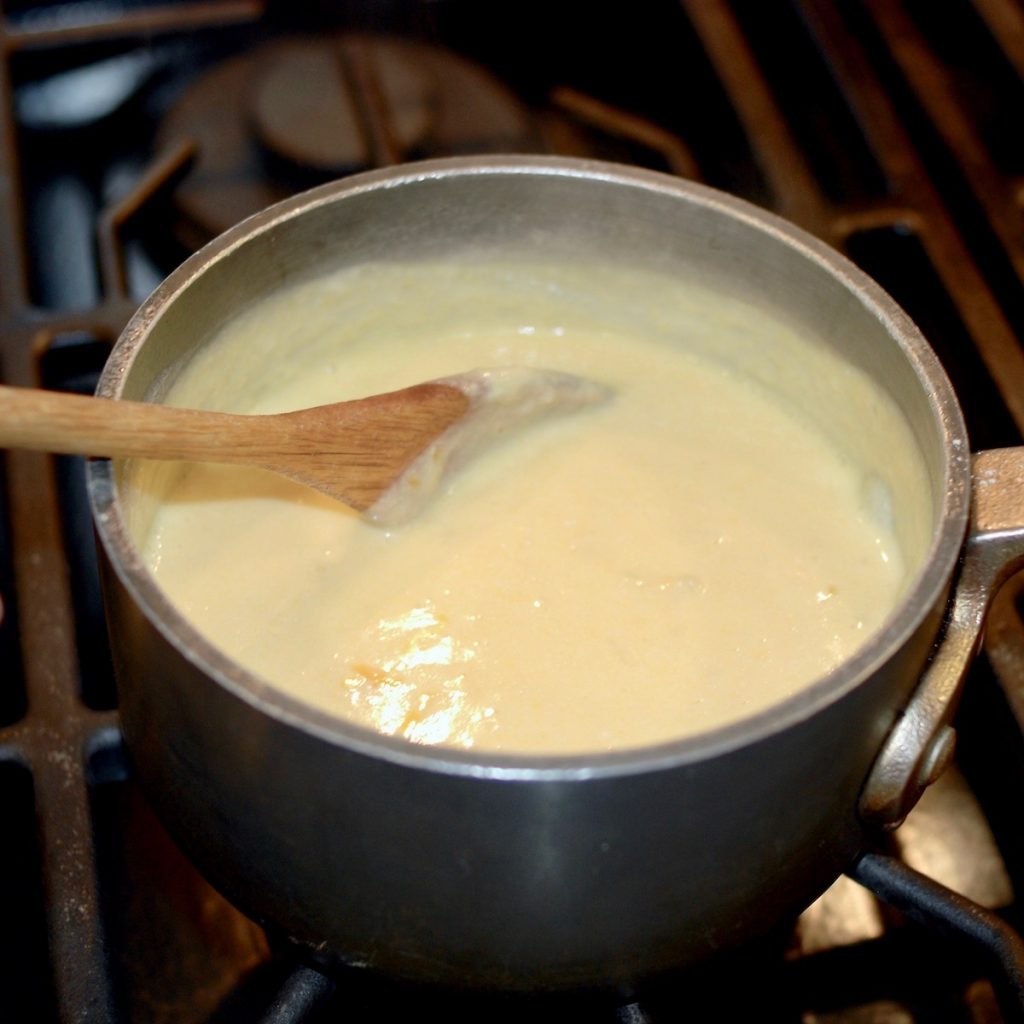
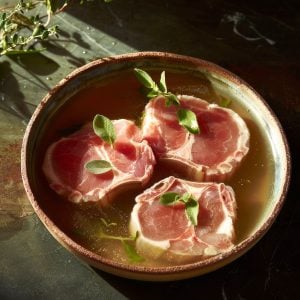
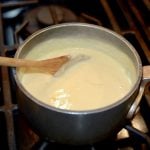
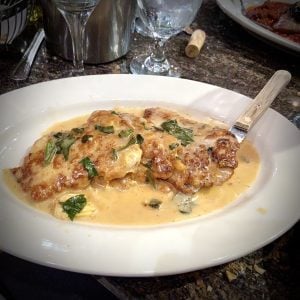
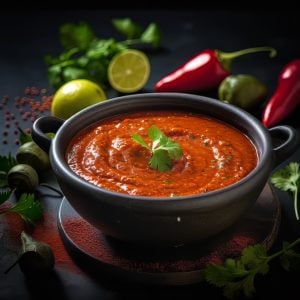
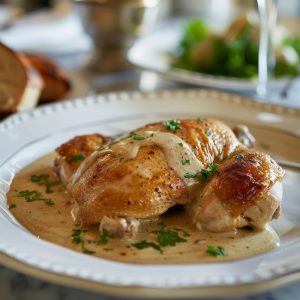
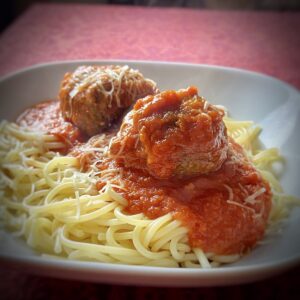
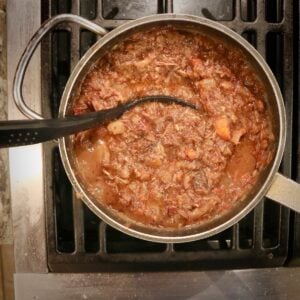
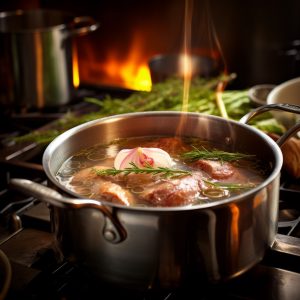
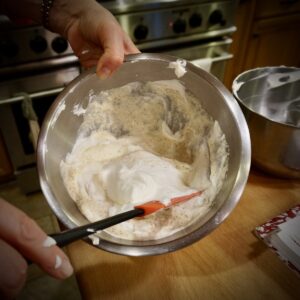
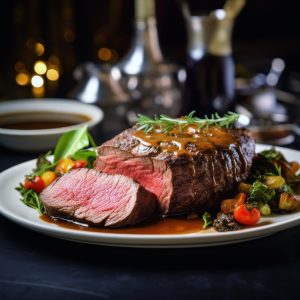


3 Responses
Neither Carême or Escoffier mention mother sauces in their writing. Carême mentions a few sauces as the “grande dames” of sauces. The first hint of Escoffier claiming five mother sauces and others sauces deriving from them comes from the translator of the first edition of “Guide Culinaire”. The book, “A Guide to Modern Cookery” published in 1907, has an added paragraph discussing the “mother sauces” that is not any of the French editions. Escoffier neither spoke or read English so this paragraph was probably added without his knowledge.
I like your sauce recipes
Thank you Mrs Walsh